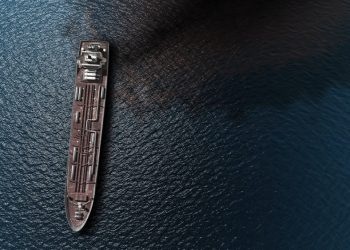One of the first experimental investigations to simulate the high-pressure formation of oil droplets during deepwater blowouts has attracted the attention of the prestigious journal Chemical Engineering Science.
The researchers, from The University of Western Australia and the University of Miami, hope their results will inform clean-up and remediation efforts after disastrous coastal and deepwater oil spills and gas leaks.
Dr Zachary Aman, from UWA’s School of Mechanical and Chemical Engineering, said given the significant offshore developments in WA, this laboratory accomplishment would be good news for our State.
Published this week, the researchers’ article – “High-pressure Visual Experimental Studies of Oil-in-Water Dispersion Droplet Size” – details a model used to predict droplet size for Deepwater Horizon conditions.
Deepwater Horizon, on 20 April 2010, was the biggest accidental marine oil spill in the history of the petroleum industry. Eleven people died on the BP-operated Macondo Prospect in the Gulf of Mexico – less than a year after one of Australia’s worst oil disasters when petroleum fluids from the Montara field in the Timor Sea leaked off the north-west coast of WA for 74 days.
The formation of oil-in-water dispersions is a critical step during the blowout of oil and gas production systems and is a determining factor in the migration of oil through the water column, the researchers write.
“This is the first time we’ve been able to visually monitor how droplets break up and coalesce at these deepwater conditions,” Dr Aman said. “These results suggest there is a range of natural turbulence conditions in which crude oil may naturally disperse as small particles that are about 10 times the width of a human hair.”
“These new measurements suggest that deep-water physics and the associated high pressure may create a natural dispersion mechanism that does not require chemical assistance,” said Professor Eric May, UWA’s Chevron Chair in Gas Process Engineering. “The prominence of this dispersion mechanism increases with water depth and may be a primary controlling factor for deep-water oil and gas operations.”
Being able to measure the size of crude oil droplets that were saturated with gas and dispersed means that it will be possible to assess the scale of potential damage at blowout sites.
“Developing the experimental equipment to measure dispersed oil particles represents a critical engineering challenge,” said UWA’s Professor Michael Johns. “UWA has been able to contribute a critical experimental capability to the global stage.”
Source: University of Western Australia
In the beginning, I was frank with you propecia before and after has changed my being. It has become much more fun, and now I have to run. Just as it is incredible to sit.
































































